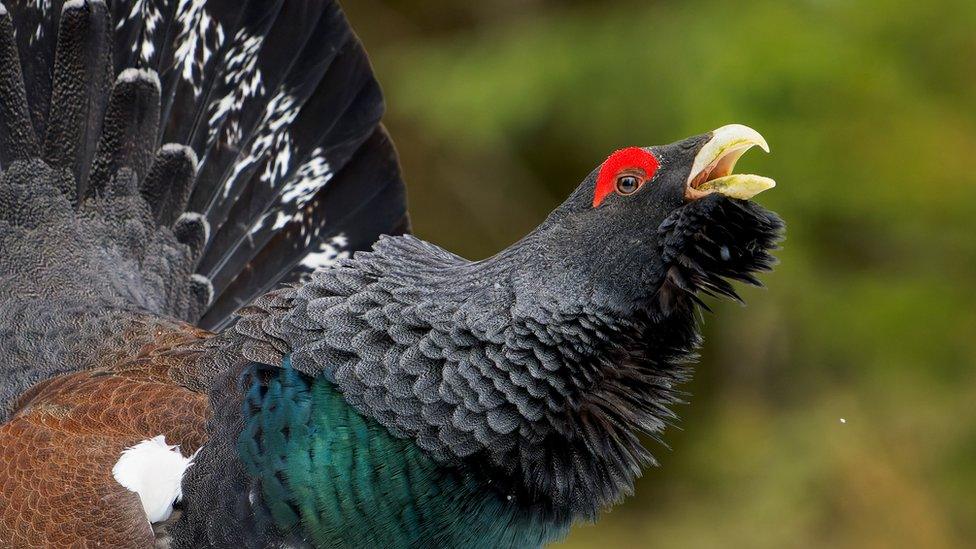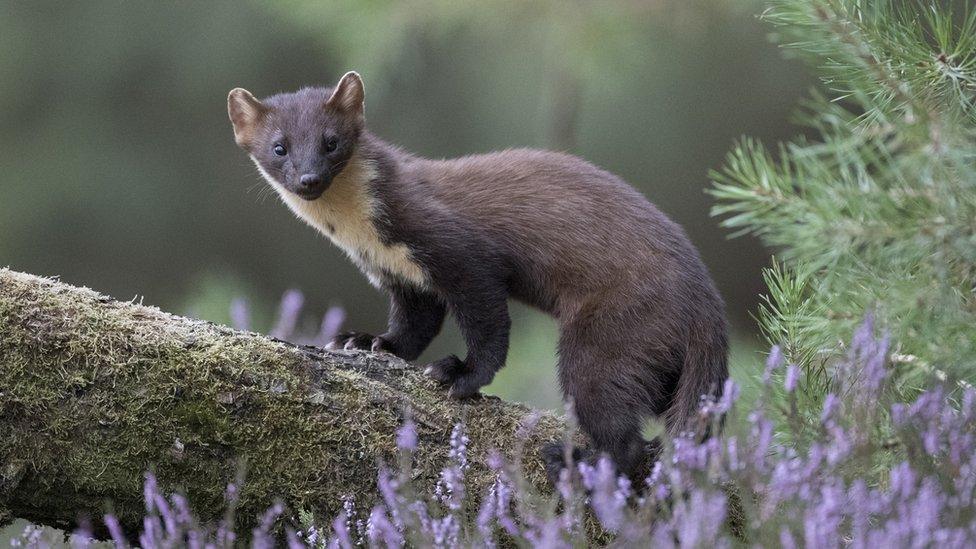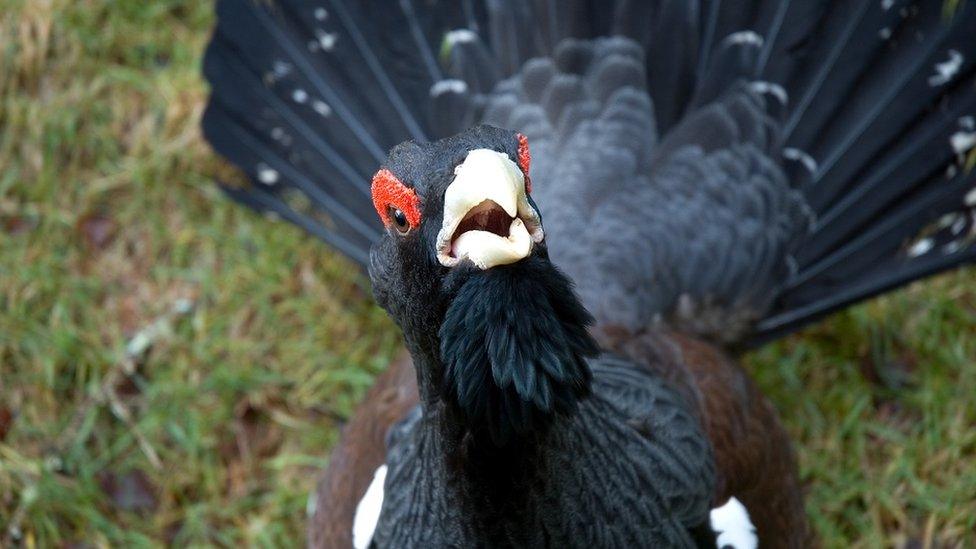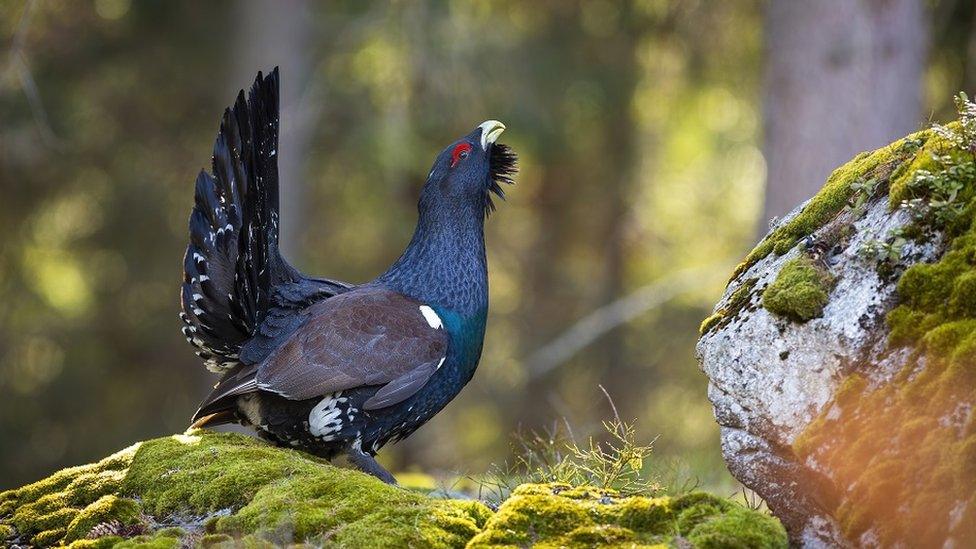Scotland's capercaillie could vanish in 30 years
- Published

Capercaillie are considered to be an endangered species in Scotland
Capercaillie could be wiped out in Scotland within the next 30 years, scientists have said.
Numbers of the large grouse have declined markedly since the 1970s and there may now be fewer than 1,100 of the birds left.
In continental Europe, the birds' conservation status is not rated as a concern but they are considered to be an endangered species in Scotland.
Most capercaillie are found in the Cairngorms National Park.
A report, external by a sub-group of the NatureScot scientific advisory committee said the birds' breeding success was too low, and they could disappear from Scotland within the next two to three decades.
Factors behind the decline include foxes, crows and pine martens eating eggs and young birds, disturbance by visitors to areas where capercaillie breed and also fatal collisions with deer fences.
The sub-group has suggested a number of action, including controlling foxes and crows by diverting them to alternative food sources, or killing them.
Pine martens could be trapped and released elsewhere. They have previously been relocated from Scotland to parts of England.
Removing deer fences, and creating larger refuges free of human disturbance have also been suggested.

Scientists have suggested trapping and relocating pine marten
Biodiversity Minister Lorna Slater said: "Capercaillie are magnificent birds and an iconic species for Scotland, so I am deeply concerned that their population continues to decline.
"This underlines the need to redouble our efforts to work in partnership and at the landscape scale to reverse these declines."
She said the report's recommendations would be carefully considered and NatureScot would continue its work with other organisations on conservation projects, such as the Cairngorms Capercaillie Project.
The Scottish Gamekeepers Association said capercaillie numbers had suffered because predators had not been controlled for years.
Chairman Alex Hogg said: "Gamekeepers have been lone voices, often discredited when speaking about capercaillie.
"This science is an endorsement that they were correct. Now we need to undo the years of waste, and mis-spent public money, and get on and save this iconic species."
The Game and Wildlife Conservation Trust, which supports what it calls effective predator controls, said there should be a commitment to lethal control of foxes, "however unpalatable this may be in certain quarters".
It also said access to certain areas of land for dog walkers, hillwalkers and mountain bikers should be restricted during the breeding season.
The capercaillie is a native species that became extinct in Britain in the mid-18th Century. The main cause for the extinction was thought to have been a catastrophic loss of its woodland habitat.
Birds from Sweden were reintroduced into Perthshire in 1837, followed by later reintroductions to Scottish pinewoods.
In the UK, capercaillie are only found in pine woodlands in parts of Scotland.
- Published22 January 2022

- Published24 June 2021
